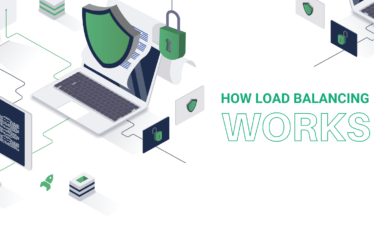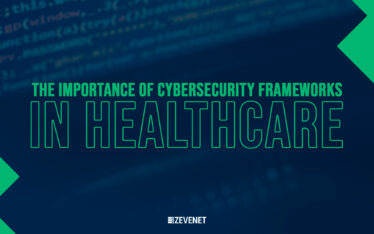
A network operations center (NOC) is a central location where IT teams in an organization monitor the performance of a network. The NOC provides servers, databases, hard disk space, and a high-quality internet connection. It also offers high-tech tools that allow IT workers to diagnose connectivity issues and security problems.
The network operations center (NOC) is core for many organizations that rely on IT to keep the business running. NOCs are essential in ensuring the reliability and availability of network-based services and devices used daily by employees and enable organizations to monitor their IT infrastructure under one roof and assist their users effectively in case of an emergency.
The NOC team is responsible for maintaining network performance by resolving any issues. It monitors and manages the IT infrastructure, including hardware, software, and communication links.
Before diving into the NOC best practices, It’s essential to understand its importance in an organization.
Importance of NOC in Organizations?
Network Operation Center or NOC is an essential element in any organization. It helps to monitor and manage the network infrastructure effectively. It helps to keep the overall system healthy.
Here are some of the importance of having a robust Network Operations Center:
Monitoring: The NOC helps monitor your network infrastructure, enabling you to find out potential problems that can be fixed before they escalate.
Maintain Quality Of Service: A good NOC will help maintain the quality of service you provide to your customers.
Reduced Costs: a Network Operation Center reduces costs for your business as it helps prevent downtime and thus reduce losses. It also reduces overhead expenses like electricity bills and maintenance costs because the NOC team monitors all these things instead of having them done manually.
Availability: The NOC should provide customer service to your customer 24/7 without any interruptions.
The network operations center staff monitors your networks, servers, database applications, and other critical systems essential to keep your business online and up and running.
Monitor your data centers, firewall, routers, switches, load balancer, VPN, and other network devices that form part of your network infrastructure.
Users and customers can focus on other important things, such as making money for their business, instead of worrying about how their network is doing.
Network Operations Activities
Network operations activities are a normal part of network management which entails;
Monitoring and analyzing network operations
Providing basic troubleshooting skills
Configuring routers and switches
Upgrading network software and hardware
Responding to network problems, outages, and slowdowns
Following change management policies and procedures
Documenting network operations activities
Applying patches, software updates, and maintaining network devices.
Updating firmware
Running backups
Configuring new servers
Best Practices
When you’re in charge of a network operations center, you are responsible for managing the IT infrastructure for your organization. There’s a lot of pressure to keep things running smoothly, so you need processes in place that make your job easier. Let’s look at some of them.
Enable strong communication
Maintaining open lines of communication within the NOC, and other teams can be difficult. It’s certainly more than just scheduling a few meetings on a regular basis. It takes a coordinated effort to train employees on how and when to share data, as well as hold them responsible for doing so. A solid NOC relies on regular opportunities for collaboration and coordination.
Create specific guidelines and protocols: Maintain order by establishing clear guidelines for the following:
Incident management: Document the procedures that technicians should use to tackle incidents ie when a technician can make the call, when to notify team members or when to escalate the decision.
Solutions: Layout processes for handling common problems and provide immediate solutions to emergencies.
Escalation: Determine how and to whom the team should escalate issues.
Prioritization: Determine which incidents are the most important or which technician should handle them. Incidents should be prioritized based on their impact on the business.
Ensure maximum up-times
In today’s competitive business environment, vendors and customers alike expect a high uptime from their NOCs. A system outage can cost your company millions of dollars in lost productivity and diminished customer loyalty.
The key to success is rigorous planning and preparation before an incident occurs. There are several steps you can take to ensure maximum uptime.
The first step to ensuring maximum uptime on the network is appropriately implementing maintenance routines. Routine tasks should be practiced at least monthly, if not weekly or daily for some systems. This ensures that everything runs smoothly and prevents any chance of downtime from occurring by chance.
Another important way of ensuring maximum uptime is to keep all software patches up-to-date. A patch should be updated as soon as it is released to reduce the risk of an attack becoming a disaster. Monitoring vulnerabilities and critical bugs in the network regularly can also prevent disasters.
Finally, having a backup plan helps maximize uptime on the network. If one part of the system goes down or malfunctions in some way, a backup helps prevent too much downtime
Enhancing client experience
IT is the lifeblood of any company. When working with technology professionals, you provide valuable resources that allow clients to accomplish their goals. As a result, you should provide the best possible service. They want to know that you clearly understand their needs and provide the high-quality support they require to accomplish them.
A network operations center (NOC) can provide an invaluable service by reducing the time it takes for your employees to respond to client requests and increase their service quality. By saving time, money, and resources through increased efficiency in your NOC processes, you can improve the experience your clients have with your company.
Responding immediately to any incident in the network
Having a network operations center (NOC) that is only staffed during regular business hours is over. While you may not want to be on-call 24/7, you need to have someone who can respond immediately to any incident in the network. The consequences of not doing so include; slow, massive outages, security breaches, and wasted time and money spent on damage control.
Reducing operational costs
According to a recent survey, reducing operational costs is a common goal for network operations centers (NOCs).
If you follow these simple steps, you’ll save money in no time!
Have a plan. A plan for new projects and for handling an emergency. Who will fix your broken project? How will they fix it? What tools do they need to accomplish that task? Do they have access to those tools? Do you have any employees with the skills necessary to perform this task?
Get the right staff. When hiring an employee, ensure they have the skills needed to succeed at their job. If your NOC team is working with outdated software, find an employee who can update the software or train existing employees on how to use it.
Keep up with training. Provide training to your staff regularly to ensure they are updated. Do not wait until someone quits or retires before you start looking for new hires. Alternatively, train your employees to multitask in areas they are knowledgeable in.
Update your system. With so much change in the IT sector, human labor can be deployed to other essential aspects of the Network Operating Center while updating software that can run on its own. A good example is the use of AI.
Collect Performance Data and Generate Reports
The more information you have about the performance of your network, the better decisions you will be able to make. However, this does not only necessitate the collection of data; it also necessitates the analysis of that information, and even the use of Machine Learning mechanisms. If you have studied the data pertaining to your network’s behavior, you will have everything under control, which will even assist you in achieving higher levels of performance.
You can automate your reports without spending time creating them if you properly define their structure. As a result, you can analyze the data with the required periodicity and identify the limits or key indicators that will alert you if something isn’t working properly.
Develop and Maintain a Business Continuity Plan
A business continuity plan (BCP) is critical for risk management in your NOC operations, as demonstrated by the COVID-19 pandemic, which exposed serious flaws in many firms’ preparedness.
The BCP serves as a road map for NOC personnel and management to follow when recovering from a disaster or other adversity. When properly implemented, it ensures that operations recover quickly and effectively, minimizing any negative impact on the business.
If a disaster or significant workforce disruption affects your operation, your NOC will almost certainly remain vulnerable to the following problems if you do not have an effective BCP in place:
Damage to reputation/brand
Loss of customers
Damage or loss to property
Negative impact on insurance
In order to create a BCP, key representatives from across the organization must be involved. This may include third-party vendors. Whether you’re creating one from scratch or evaluating an existing BCP, make sure it includes the following at a minimum:
An examination of all organizational threats
A list of actions required to maintain operations for short-term and long-term interruptions
Contact information for key stakeholders is easily accessible
An explanation of where and how personnel should relocate if operations are disrupted
The steps that must be taken in order for the backup site(s) to be operational
How all areas of the organization must work together to carry out the plan
Maintain your Network up to Date
A simple out-of-date device can be a major source of frustration. If you want proof, consider the case of a global ISP corporation, which experienced a day-long outage due to an expired software certificate – a case that could have been easily avoided.
Updating your network will not only prevent costly outages, but will also improve the stability and protection of your network.
Final Thoughts
It’s one thing to talk about best practices; it’s quite another to put those practices into action within your organization. Success necessitates careful planning and attention to detail, which is why expertise is essential at the get go of building your NOC.
THANKS TO:
Geri Mileva




